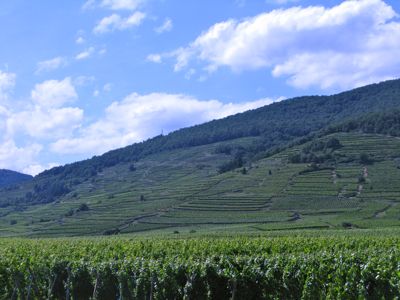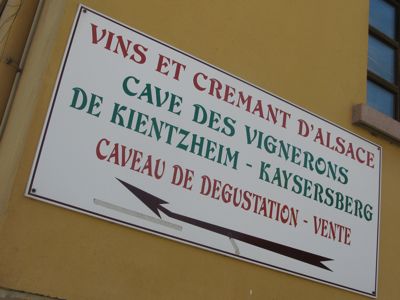
Alsace wine producer: Cave Vinicole Kientzheim-Kaysersberg
The Alsace wine industry is built on three categories of producers: the family business (often with about 10 hectare), négociants (including Trimbach, Hugel, Beyer and Lorentz), and cooperatives. The latter have evolved in three historic stages, and after World War II the wine producers in the totally devastated Colmar pocket came on their feet by joining forces around a series of newly formed cooperatives. Together, the economically weakened farmers could build up production and market, which for small growers many was - and still is - impossible. Today, the three large cooperatives in Eguisheim (brand Wolfberger), Bennwihr/Westhalten (brand Bestheim) and Ribeauvillé (brand Martin Zhan) account for 30% of the regions' volume. Other important and very good cooperatives are Pfaffenheim, Turkheim, Kientzheim-Kaysersberg and Hunawihr.
You should absolutely not despise cooperatives. Although they will never ever reach the highest heights they bring together substantial skill and, not least, excellent terroirs.
Cave Vinicole Kientzheim-Kaysersberg is made up of 130 landowners in the villages Ammerschwihr, Kientzheim, Kaysersberg and Sigolsheim (which also has a local co-operative). In practice, however, 20 families with a total of 170 hectares deliver the major part of the grapes to the CV Kientzheim-Kaysersberg.
The wines sold under the brand Anne Boecklin. In the 16 the century, Anne Boecklin was married to Baron de Schwendi who, among other things, is said to have brought the grape Pinot Gris, until 2006 known as Tokay d'Alsace, from Hungary to Alsace. Their marriage apparently includes a division of roles, where he fought while she took care of the important matters, including the considerable vineyards of the estate.
A tasting at the CV Kientzheim-Kaysersberg provides an opportunity to explore the differences between the four Grands Crus it offers. Here is the exciting Kaefferkopf, the fruity and mineral Schlossberg (se picture below), the magnificent Furstentum and the often caramelized Mambourg. In addition, the wines at lower levels offer many nice surprises, not least in terms of prices. Riesling from Schlossberg (see picture below) and Pinot Gris from Furstentum, are however, sure bets, as for almost all producers.
So, the next time you are in Alsace - visit Cave Vinicole Kientzheim-Kaysersberg. But leave all your prejudices at home, and enjoy all the fine products that are offered.
Last visit: 2011.

Facts
contact@cave-kaysersberg.com
Riesling Grand Cru Schlossberg €11
Lieux-dits: Altenbourg, Patergarten
